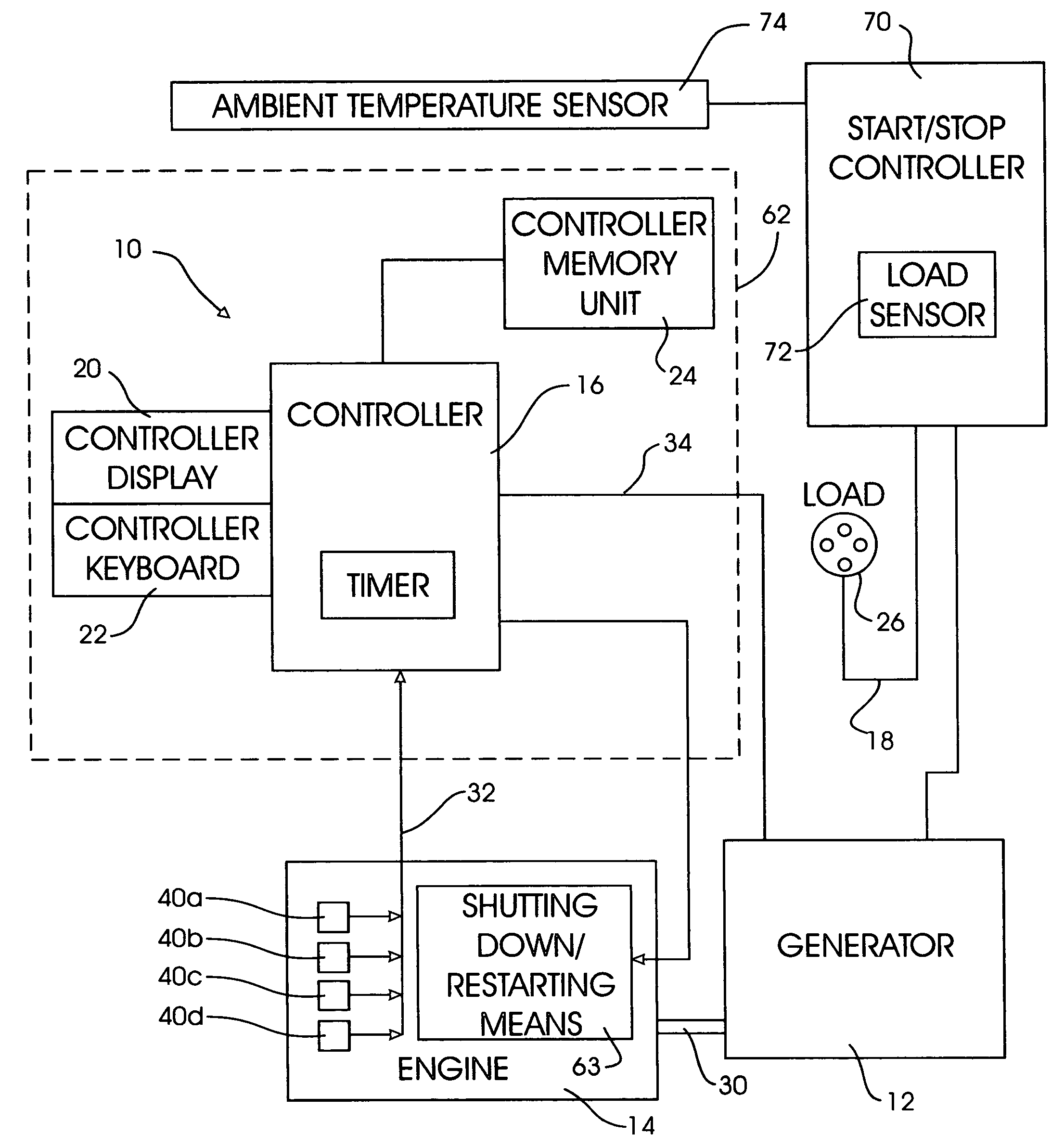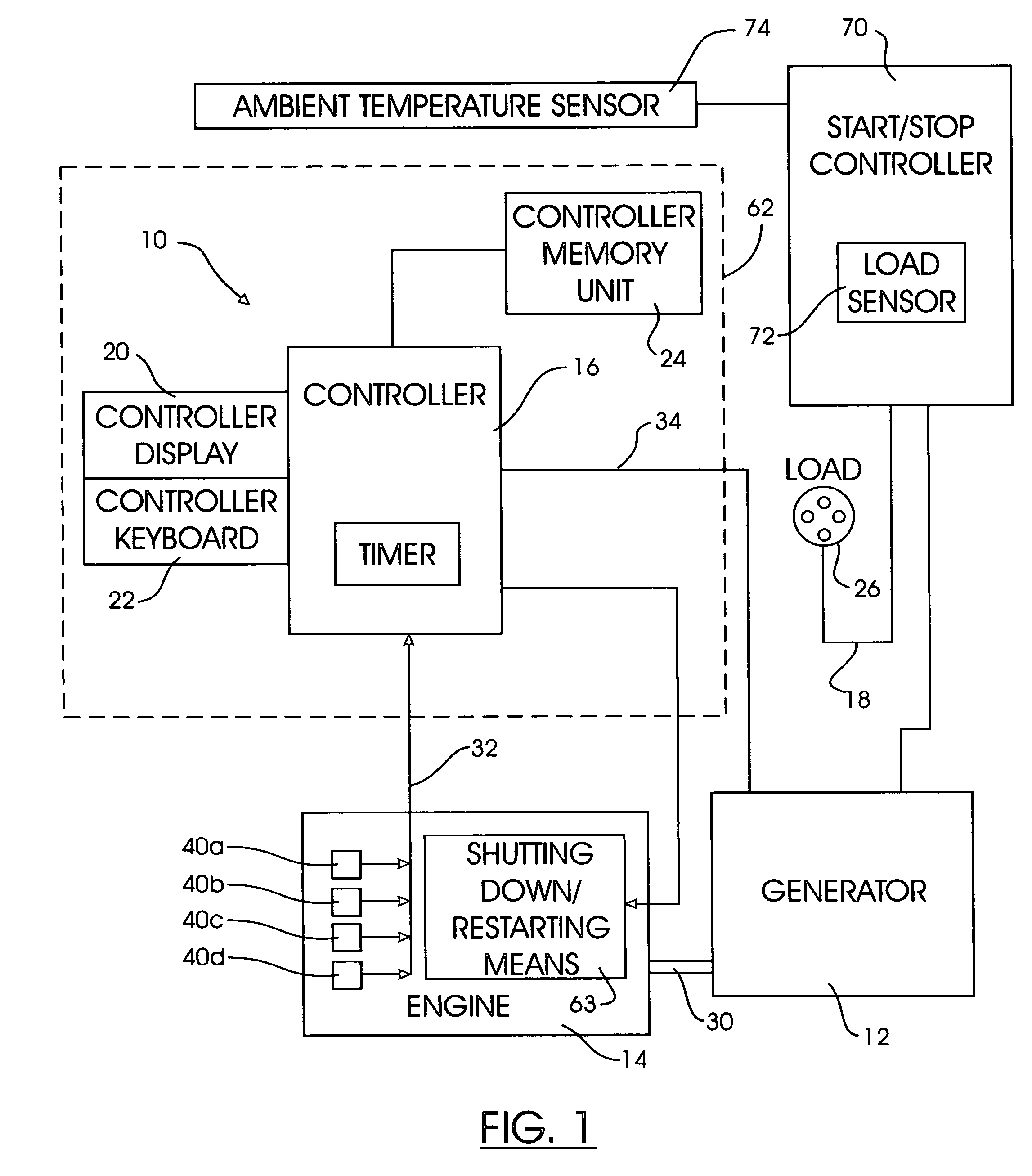Generator start/stop controller
a technology of start/stop controller and generator, which is applied in the direction of electric generator control, motor/generator/converter stopper, dynamo-electric converter control, etc., can solve the problems of virtually impossible to predict where and when refueling is required, frozen contents of containers at risk of perishing, and constant operation of generator consumes the entire 130 gallons of fuel, so as to achieve cost reduction, energy and equipment saving, and a cleaner environment
- Summary
- Abstract
- Description
- Claims
- Application Information
AI Technical Summary
Benefits of technology
Problems solved by technology
Method used
Image
Examples
Embodiment Construction
[0021]Referring now to FIG. 1, a generator set 10 in accordance with the present invention is shown in block drawing form. Generator set 10 includes three principle components, a generator 12, engine 14 and a controller 16. The controller is enclosed by enclosure walls 62 represented in a dash-lined box in FIG. 1.
[0022]Engine 14 is preferably an industrial duty diesel engine. Such an engine would include a cooling system, an oil lubricant system, an electrical system including a battery, an alternator and glow plugs. Its fuel system would include a fuel tank and a fuel solenoid for controlling the flow of fuel to the cylinders. A drive shaft 30 transfers energy from the engine to the generator. The engine 14 also includes means for shutting down and restarting the engine 14. The shutting down / restarting means is identified generally at 63 in FIG. 1. The shutting down / restarting means 63 is collectively comprised of well known electronically actuated components such as a fuel valve a...
PUM
 Login to View More
Login to View More Abstract
Description
Claims
Application Information
 Login to View More
Login to View More - R&D
- Intellectual Property
- Life Sciences
- Materials
- Tech Scout
- Unparalleled Data Quality
- Higher Quality Content
- 60% Fewer Hallucinations
Browse by: Latest US Patents, China's latest patents, Technical Efficacy Thesaurus, Application Domain, Technology Topic, Popular Technical Reports.
© 2025 PatSnap. All rights reserved.Legal|Privacy policy|Modern Slavery Act Transparency Statement|Sitemap|About US| Contact US: help@patsnap.com


